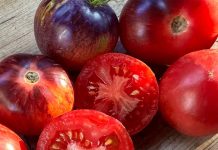The line through airport security was astoundingly long—every passing minute convinced me I might miss my flight. Just in time, another station was opened and the line divided in two.
Statistics show that in a supermarket line, one should always choose the one with the fewest people, regardless of how full their shopping baskets. Someone did the math and determined that it’s the process of each person paying that takes the most time, not the number of items being purchased.
I used that logic when deciding which line to go in–the newly formed one, with about 12 people including a mix of business travelers and people decked out in the latest from REI, or the one I was already in, which had fewer people (though the six travelling ladies reminded me of a scene from “Bridesmaids”).
Logic prevailed and I obeyed the memory of my statistics professor’s words, staying in the line with fewer folks. One of the “bridesmaids” whipped out her phone and began photographing her friends going through security. “One more, girls! Cheese!” The folks in the longer line were deemed unlikely to pose a terrorist threat, and were already putting their shoes back on, while the photo ops in my line continued to present themselves. I had let logic beat my trusty gut feeling—and logic was wrong.
How do we make choices? Every day we make a number of decisions based mostly on rational thought, but hundreds are based on intuitions: sudden judgments whose origin we can’t immediately explain. Rapid cognition is a way of reasoning wherein the many processes by which a decision is reached take place outside of our conscious awareness.
Like a computer, our brains observe a situation, quickly scan several files and then form meanings and attributions to come to a decision. In fact, the expression “gut feeling” proves to be quite accurate—we know that the gut has literally millions of nerve cells, and through those, has “a mind of its own.”
We live in a time when decisions reached through effort and research are more highly respected than those which seem to be made through a more whimsical approach. There really are moments, though, and especially during times of high stress, when snap judgments and first impressions can actually lead to better decision making.
In his book, “Blink,” Malcolm Gladwell says that, “There can be as much value in the blink of an eye as in months of rational analysis.”
Gladwell focuses on the two seconds during which we engage in rapid cognition—the brain is operating at hyper-speed, but beyond our conscious awareness. We do not always make the best decisions when we take time to carefully evaluate all available information. Thin-slicing means making very quick decisions with minimal amounts of information.
Gladwell tells of emergency room physicians at Cook County Hospital in Chicago who were asked to use less information, rather than more, to diagnose patients with chest pain. By reducing the number of tests and available data, and paying most attention to blood pressure and EKG, that emergency room now is ranked as one of the most accurate in the assessment of chest pain.
Thin-slicing is the way our brains take minimal information without the use of conscious input to make quick decisions. Police and firemen can attest to the lifesaving value of relying on such “gut instincts.” The next time I find myself in a long line at the airport, I swear I will pay attention to my gut. If only I could hear it better than I can remember the voices of those old stats professors!
Ruth Wimsatt is a clinical psychologist in Newport Beach, and can be reached at (949) 222-3285 or at ruwimsatt@gmail.com.




